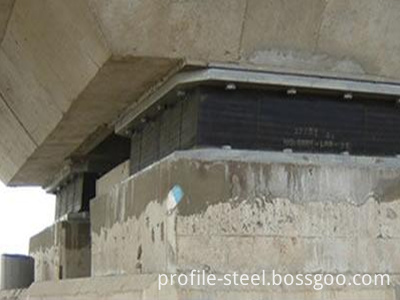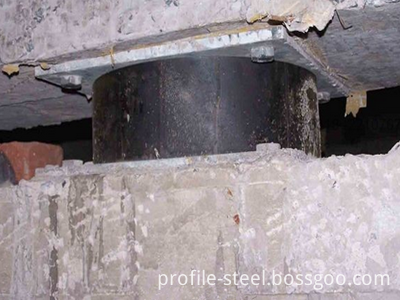At present, wheat in most areas has entered the grain filling stage, and white spikes (wheat wheat head and dead wheat ears) are likely to occur in the late stage of wheat filling, which has a great impact on wheat yield.
In the past two days, I have also seen farmers responding that there are sporadic white ears in their wheat fields, and a small amount of white spikes appear in the wheat fields next door. I don't know what is going on.
In fact, there are many reasons for the emergence of white spikes in wheat, which often occur sporadically or in pieces in the field. It generally includes pathological, pest and environmental climate reasons.
In this article, we will talk in detail about the pathological reasons.
Wheat root rot
The whole growth period of wheat can cause disease.
Root rot is often caused in the seedling stage, and large yellow and dry seedlings appear in the wheat field.
  

The adult stage causes leaf spots, ear rot or black embryos.
  

Mainly infest the stem base, roots and tillers.
  

In the adult stage, the fusiform or elliptical brown spots on the wheat leaf are enlarged, and then they are long oval or irregular large spots. The middle part is light, and the black mold is on the wet climate, causing the leaves to dry.
The roots are decaying brown.
When a severe wheat field occurs, the grain part of the grain becomes black and forms a black embryo.
  

Therefore, the typical symptoms of root rot are root rot, leaf blight, and embryo.
2. Wheat sheath blight
Sheath blight is a soil-borne fungal disease that is common in wheat and is a serious hazard.
  

It can infect the disease throughout the growth period, often causing symptoms such as rotten germination of wheat, dead of diseased plants, stalks of flower stalks, white ears of dried plants.
  

  

It mainly infects the leaf sheath, and first forms a brown lesion on the leaf sheath of the stem, and slowly develops into a gray-spotted lesion with a gray color at the middle and a light brown edge.
  

  

After the fusion of the lesions, the stalks on the base of the stem are stalk-like, and finally the lesions invade the stalks to form a light brown near-circular plaque with a central taupe edge, and the stem will lose water and necrosis.
The typical symptoms of wheat stalk are mainly the flower stalk of the diseased plant, and there are cloud-like plaques on the leaf sheath.
3. Wheat total erosion
It is a typical basal disease. The white ear is mainly caused by the damage of the root and stem base, which often occurs at the base of the root and stem at the 1-2 knot.
  

When the total eclipse is severe, it often appears as a white spike. There will be a piece of white piece of varying size, which will be randomly distributed and the film will become larger and larger.
  

40%~60% of wheat in severe wheat fields will become white ears.
After the heading, the roots of the roots and stems will turn black and the lesions will be black.
  

  

The typical symptoms of total eclipse are mainly black roots and black feet, and the diseased plants are easy to pull up.
4. Wheat scab
The scab of wheat can be affected from the seedling stage to the ear stage, and the damage at the ear stage is the most serious.
Generally, it is infected during the flowering period, and it is obvious at the filling stage, and the maturity period is serious, causing serious impact.
  

From the heading to the filling stage of wheat, especially during the flowering stage of wheat, the amount of rain is the most important factor in the severity of the disease.
In the case of continuous rainy weather for more than 3 days in the heading and poplar stage, the disease may occur seriously.
Most of the white spikes caused by Gibberella appear as part of the white ear, or in the middle, or in the upper part, or the lower part. The white spikelets will appear in the gap after the humidity in the field is high.
  

After the onset of the grain, the grain shrinks and becomes dry, or becomes pale or purple, and sometimes the surface of the grain has a layer of pink mold.
  

Several disease prevention methods:
1. Chemical dressing
For the prevention and treatment of diseases, especially the prevention of the above four diseases, seed dressing before wheat sowing can play a very good control effect.
Some chemical agents for controlling fungal diseases are commonly used for dressing with nitrile azole, difenoconazole, triadimefon, tebuconazole, and iprodione.
2. Selection of resistant varieties
The four diseases in the selection of resistant/resistant varieties are as follows:
(1) Scab should choose medium or resistant varieties.
(2) There is a lack of high-resistance varieties in the production of sheath blight, and the selection of disease-resistant varieties in severely ill fields can significantly reduce losses.
(3) Most of the varieties currently promoted in production are less resistant to root rot. Generally, varieties with more surface hair and less pores are relatively resistant to disease.
(4) Total erosion disease has not found any varieties that are more resistant to total wheat eclipse, so the focus is still on seed treatment.
3. Chemical control
(1) Wheat root rot
The prevention and control of wheat root rot is based on planting disease-resistant varieties and cultivation and disease prevention, supplemented by comprehensive measures for chemical control.
Grasp the key prevention and control during important times:
For the first time, spraying propiconazole, iprodione and other agents during the flowering stage of wheat.
The second time, spraying the fertilizers such as mancozeb, carbendazim, refined metalaxyl, and chlorfenapyr from the grain filling stage to the early stage of milking.
(2) Wheat sheath blight
Prevention and control of wheat sheath blight should be controlled before and after wheat jointing and when the sheath blight is first developed (around mid-March).
The drug can be selected as a triazole drug such as Jinggangmycin, Thioflavamide, Benzene, Propiconazole or hexaconazole.
If the sheath blight occurs during the filling period, timely medication, optional tebuconazole, flusilazole, hexaconazole and other agents.
note:
Triazoles have a certain inhibitory effect on wheat growth. The application of wheat before and after jointing can also reduce the length of wheat basal internodes and enhance the lodging resistance of wheat. But pay attention to the weather and seedlings, so as not to excessively inhibit the growth of wheat.
In the prevention and control of wheat sheath blight, in addition to the selection of the drug type and the amount of foot medicine, it is very important to use the amount of water. The amount of water should be increased and the drug should be sent to the susceptible part of the wheat base to improve the control effect.
In severely ill areas or in heavier areas where perennial occurs, spray again about 10 days after the first spraying to ensure control.
(3) Wheat total erosion
Rejuvenation and jointing are important periods of prevention. If a large number of them appear after grouting, they will not be controlled.
At present, the agents registered for the prevention and treatment of wheat total eclipse mainly include difenoconazole, stilbinimycin, tebuconazole, and chlorfenapyr, mainly mainly difenoconazole, and a new type of medicament Amine, the effect is not bad.
(4) Wheat scab
The key to the prevention and control of scab is to do the following three things:
First, master the period of prevention and control. The best period is from wheat to spikes. If you miss this best period, it will be difficult to achieve the desired results after repeated use.
The second is to select the quasi-agent, which can be used with cymene, tebuconazole, carbendazim, prochloraz and thiophanate-methyl fungicides, as well as carbendazim, triadimefon, cymene and tebuconazole. And other compound preparations, use according to the instructions.
The third is to ensure the quality of the spray, to evenly spray the wheat ears to protect the ears from the infection of the scab.
In addition
Insect harm such as golden worms, wheat worms, and wheat roots can also cause white ears.
The climatic factors, such as the dry hot air in summer for 3 to 5 days, the highest temperature is higher than 30 °C. When the relative humidity is small, it is easy to appear dry ears of wheat in the whole field.
If the booting stage is affected by low temperature (below 4 °C), the young panicle will be damaged, and the shell will show empty shell or partial white spike after heading.
Plate-type elastomeric bearings is widely used in earthquake resistent engineering such as bridges,buildings and other building construction.Plate-type elastomeric bearings is installed as a Damping Equipment under building structures so as to control the tremor of structure against the loads of earthquake.Base Isolation System, which is a branch of manual technique to reduce the tremor of structure, is widely applied to the large sized structures such as road bridges, rail bridges and nuclear power station to minimize damages from dynamic loads like earthquake. We J.S.Brown have rich experience in this field.We supply all kinds of elastomeric bearings such as rectangular Plate-Type Elastomeric Bearing,Circular Plate-Type Elastomeric Bearing,TCYB spherical head circular elastomeric bearing and so on.


Plate-type Elastomeric Bearing
Plate-Type Bearing,Circular Plate-Type Elastomeric Bearing, Plate-Type Elastomeric Bearing,Rectangular Elastomeric Bearings
J.S.Brown New Material Technology Co., Ltd. , http://www.profile-steel.com